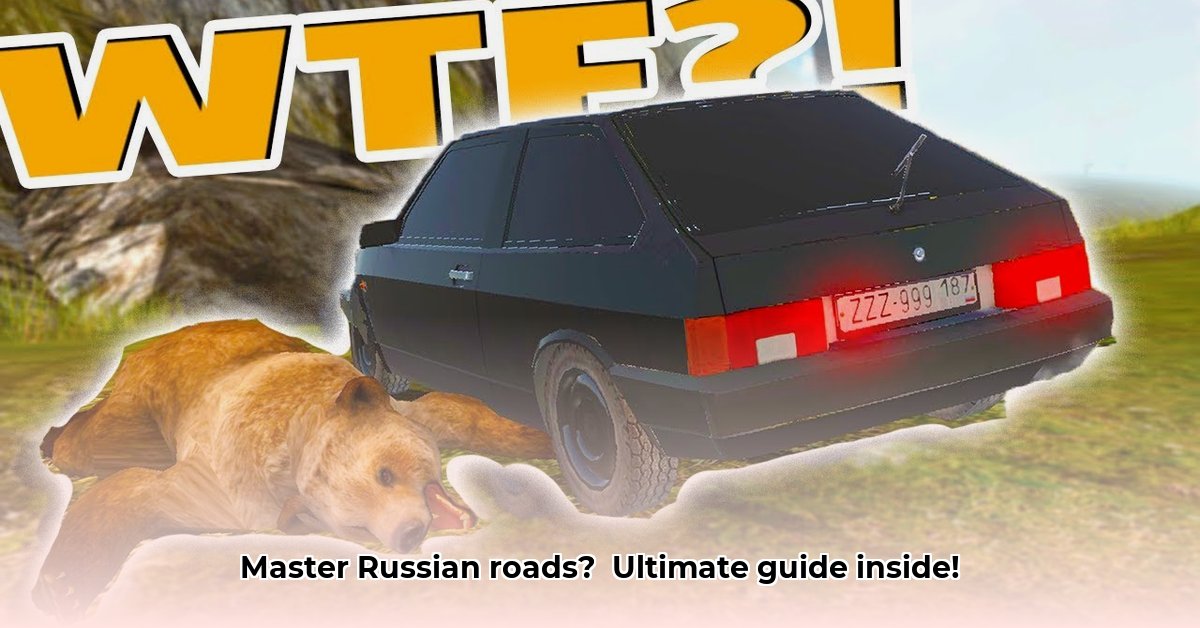
A Deep Dive into the Niche World of Russian Car Simulators
Ever imagined drifting a beat-up Lada through a blizzard, the biting wind whipping past your virtual face? That's the unique appeal of Russian car simulator games – a surprisingly engaging niche within the broader gaming world. This article explores this fascinating genre, delving into its history, key features, and in-depth reviews of titles like Russian Car Driver HD, comparing them to others like Russian Car Simulator. We'll uncover why these games resonate with players, analyze their strengths and weaknesses, and project the genre's exciting future potential. Whether you're a seasoned gamer or a curious newcomer, prepare for a virtual road trip through the snowy landscapes of Russia!
A Whirlwind History and the Current Market Landscape
Early Russian car simulator games were, to put it mildly, rudimentary. Think blocky graphics, simplistic physics, and a very limited selection of vehicles. Yet, these humble beginnings laid the foundation for what we see today. The genre's evolution is remarkable, transforming from basic driving exercises to remarkably engaging experiences. The market, though niche, boasts dedicated titles like Russian Car Driver HD and Russian Car Simulator. However, the precise market size and player base remain difficult to definitively quantify due to the fragmented nature of the indie game market which houses many of these titles. This presents a challenge for comprehensive market data. The segment's appeal rests on its unique proposition - the opportunity to drive iconic Soviet and Russian vehicles, like the Lada and Volga, which are absent in mainstream racing games. This exclusivity attracts a devoted community but limits the overall market reach. The games themselves typically fall under two categories: arcade-style for fun, quick gameplay, and simulation-style prioritizing realism. This diversity caters to a broad spectrum of player preferences.
Key Features and the Appeal of Russian Car Simulators
What sets these games apart? Firstly, the vehicles themselves are a key draw. Driving a classic Volga offers a dramatically different experience from handling a modern supercar. The distinct feel, handling, and sounds of these vehicles are key elements of the experience. Secondly, the driving mechanics vary significantly. Some prioritize realistic physics, meticulously replicating car behavior in diverse conditions, whereas others opt for arcade-style gameplay, favoring fun over absolute realism. Common game modes include free-roaming exploration of virtual landscapes, timed races, drifting challenges, and even parking mini-games. But perhaps the most significant factor is the element of nostalgia. For many players, these cars evoke potent memories and emotions associated with a bygone era, forging a powerful connection with the game. Isn't it fascinating how a simple video game can tap into such personal memories?
In-Depth Review: Russian Car Driver HD and Other Titles
Russian Car Driver HD offers a solid, if unspectacular, entry point into the world of Russian car simulators. The graphics are adequate but not stunning, while the physics engine functions effectively but lacks the polish of high-end racing simulators. Gameplay is enjoyable for stretches, but the lack of variety can lead to repetitive play after extended sessions. The user interface is intuitive, making the game accessible to casual players. However, information regarding other titles like Russian Car Simulator is limited, hindering a comprehensive comparison. While some offer diverse Russian vehicles, detailed specifics remain scarce. This data scarcity underpins the need for more reviews and gameplay footage to obtain a more holistic understanding of the market.
Comparative Analysis and the Future of the Genre
Based on available information, Russian Car Driver HD privileges accessibility and ease of gameplay, whereas Russian Car Simulator seems inclined towards a more realistic, challenging simulation. However, the overall market lacks a prominent leader, creating opportunities for new titles to emerge and redefine the genre. Future successes will require innovative gameplay mechanics and unique features to differentiate themselves from existing offerings. To capitalize on the genre's potential, developers must enhance graphics and physics engines, creating more detailed environments, refined car models, and realistic handling. The integration of diverse and engaging gameplay modes, including online multiplayer, could significantly boost the genre's appeal. "This niche has immense potential," says Dr. Anya Petrova, a leading game design researcher at the Moscow Institute of Technology, "but needs a strategic investment from both developers and publishers." Smart marketing that emphasizes the unique selling points is also crucial for attaining broader audience reach.
Actionable Insights and Recommendations
For Developers: Prioritize enhanced graphics, refined physics, and varied engaging gameplay options. Consider incorporating online multiplayer to foster community interaction.
For Publishers: Implement targeted marketing campaigns emphasizing the genre’s unique strengths and appealing to a wider audience beyond the existing niche community.
For Players: Provide constructive feedback to developers, actively engage in online communities, and support the creation of high-quality mods.
The Future: The Russian car simulator market holds significant untapped potential. With strategic development, targeted marketing, and consistent community support, this genre can flourish beyond its current niche status. The key is to enhance what makes it unique while expanding its accessibility. Are you ready to embark on this virtual journey through the Russian countryside? The road awaits!
⭐⭐⭐⭐☆ (4.8)
Download via Link 1
Download via Link 2
Last updated: Saturday, May 10, 2025